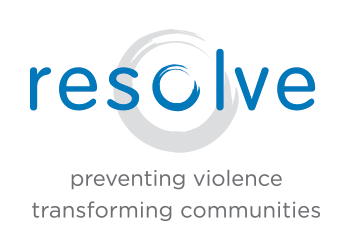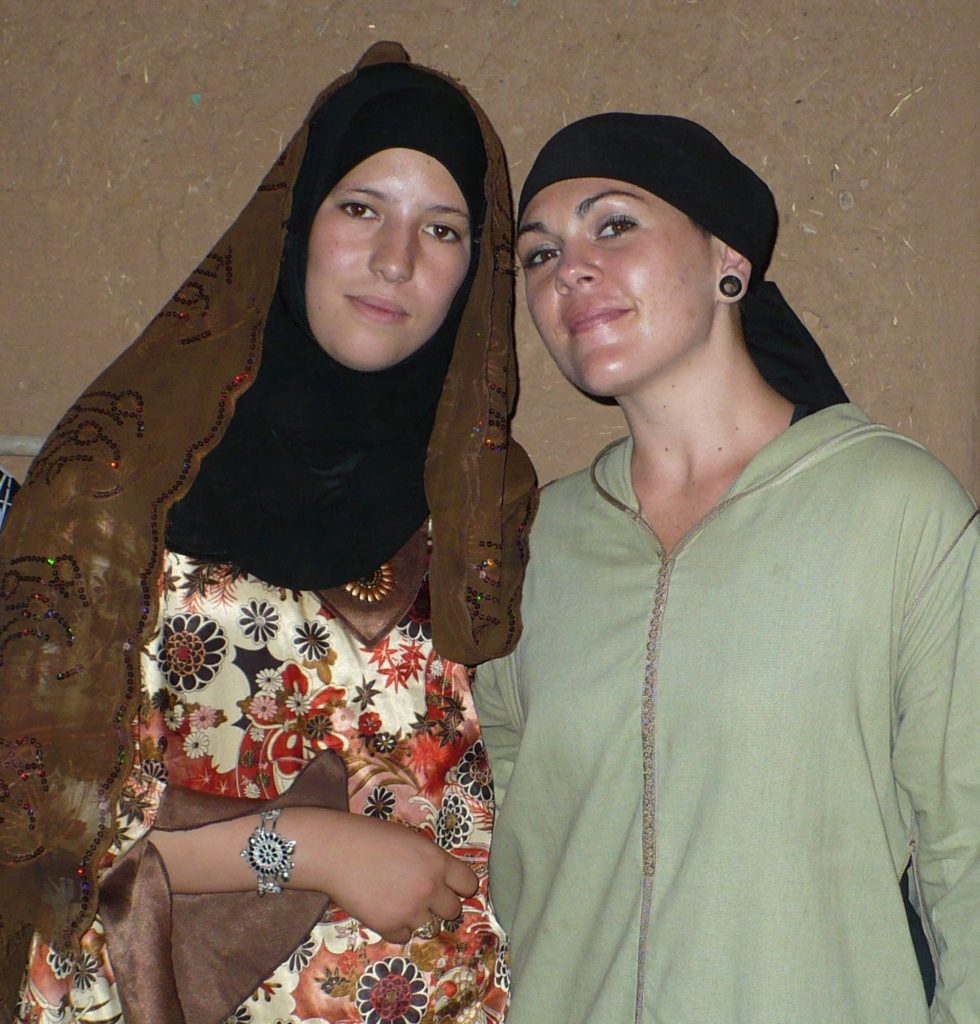We often get asked to do self-defense demonstrations for large groups at events, school assemblies, or outreach fairs. We are always honored when someone is interested in promoting our work and supporting our outreach efforts; however, several years ago we started declining when we were asked to do these demonstrations. While we have had many productive discussions with individuals in our community about this decision, we know it can seem confusing at first – so we wanted to explain.
As an organization that serves many survivors of violence, working in a trauma-informed way is critical to how we do this work. This is one thing that makes Resolve (and Empowerment Self-Defense overall) unique and effective. Unfortunately, we do not believe we can meet the criteria of being trauma-informed while doing demonstrations.
1. It is a feature of trauma that survivors oftentimes need to be able to anticipate what is coming. That simply isn’t possible to guarantee with a demonstration, particularly in a space where people are coming and going. In our classes, we always let people know what is about to occur. We show it and break it down before we invite students to practice the skills themselves. This is not just useful for students with trauma histories; it’s good pedagogy.
2. People need to opt in to doing the work of self-defense as a healing modality. When someone hasn’t opted in, something that could be deeply healing has the potential to be harmful, which we explicitly don’t want. For many of us that are survivors, our Resolve/IMPACT class did “what 10 years of therapy could not,” as one graduate stated. However, in order for it to be healing, it must be done with active consent. We teach affirmative consent to youth and know how critical it is in all things- and especially in relation to trauma.
3. It is important to the process to be able to create a “container” in class. That means that we can help people process anything that arises. At demonstrations, the goal is to be inspiring a large number of people who may be moving in and out of the space, yet we can’t be sure that everyone is leaving inspired. We design our programs so we have sufficient staff that can easily check in with students and notice reactions they might need help processing even when someone does not verbalize what they are feeling right away. Being attentive to the emotional needs of our participants helps them leave the class feeling confident and empowered.
4. We are sometimes asked to do a demonstration as a form of entertainment, to bring some excitement to the stage or event. The type of self-defense we teach simply is not entertainment. While physical skills others might present are demonstrated like a stunt for a movie or as a sport, the scenarios we teach students to prepare for are real-life scenarios, such as attempted sexual assault. When scenarios are highly realistic, it means they may bear a close resemblance to situations that viewers may have experienced in their own lives. In a classroom situation, students have the support to move through reactions they might have to that content to a place of action where they are practicing defending themselves in that same scenario. In a demonstration, while the hope is that they might identify with the person demonstrating self-defense, it is unfortunately more likely that they may freeze in their experience of their own memory.
We also know that when it is viewed as entertainment, there is always a desired emphasis on stranger scenarios- in order to show physical skills, particularly against the padded suit that the instructors playing characters wear. This does not reflect the reality of how sexual violence, in particular, most often happens. The part of the class that is oftentimes most transformative for students is learning to set boundaries with people we know! But a scenario where we are setting a boundary with a date we really like, or with an uncle, is not the type of demonstration that organizers are typically hoping for.
5. Sometimes people who are passionate about self-defense and violence prevention feel puzzled when others are not as interested or engaged as they would like them to be. This can sometimes lead to a desire to shock others into caring and being engaged. We understand – we are incredibly passionate about this topic as well! However, in our experience, when people aren’t engaged in this topic, it usually is for a reason. Demonstrations get people’s attention, but oftentimes not in the way that we want. Even for someone with no trauma history, the reality of interpersonal violence can be shocking. We would not want participants to be exposed to the harsh language that characters (instructors replicating common assault scenarios so that students can learn effective verbal strategies) sometimes use without a larger framework and container, as stated above. We never want people to feel shock in relation to our classes and the skills we teach -we want people to feel support, empathy, and interest. Some of us – especially those of us with trauma histories – may feel a sense of urgency in getting those around us involved and invested, but shock oftentimes makes people averse to the topic or approach being shown. When someone feels like their boundaries have been violated because they weren’t prepared for something, they generally do not move towards that topic. But when someone is able to learn about our programs on their terms, they are more likely to see the value in our approach and engage in the issues.
6. Yelling and hearing others yell — especially women and others who have been discouraged from being vocal and taking up space — can be transformative for participants all on its own! However, even for someone who doesn’t approach the stage or demonstration area, yelling can be disorienting and can sometimes bring up painful memories for survivors that they are not prepared for. The majority of adults who take our classes are survivors, and they do things to get ready for these classes. That preparation can range from talking with their therapist and making a plan for the support and resources they will utilize around classes to having a burrito and quiet cup of coffee the morning of class – But the point is that they know what’s coming, and they are opting in and preparing however is best for them.
Do we miss out on potentially valuable outreach opportunities when we decline demonstration opportunities? Maybe. However, it is important for all our outreach efforts to line up with our values. This means we prioritize making our services and public activities trauma-informed and supportive for whoever may be in the room.
Our organization, and others that teach ESD, work extremely hard to design self-defense classes that are trauma-informed; that are explicitly anti-victim blaming; and that are effective. The nuances and layered teaching methods that make our classes so powerful would be nearly impossible to convey in a 15 minute demonstration. Yet we know that this slower and more comprehensive approach to self-defense training works – we regularly hear from graduates who share how the class was transformative for them and how much more confidently they are living their own lives.
We are lucky to work in a community where so many people are passionate about violence prevention and self-defense, and we would love to help you learn more about our organization! We teach classes with graduations that are open to the public; we also do discussion-based classes and presentations, which are a great way to get started. If you would like us to do one of those talks for a workshop or a group, please let us know!


